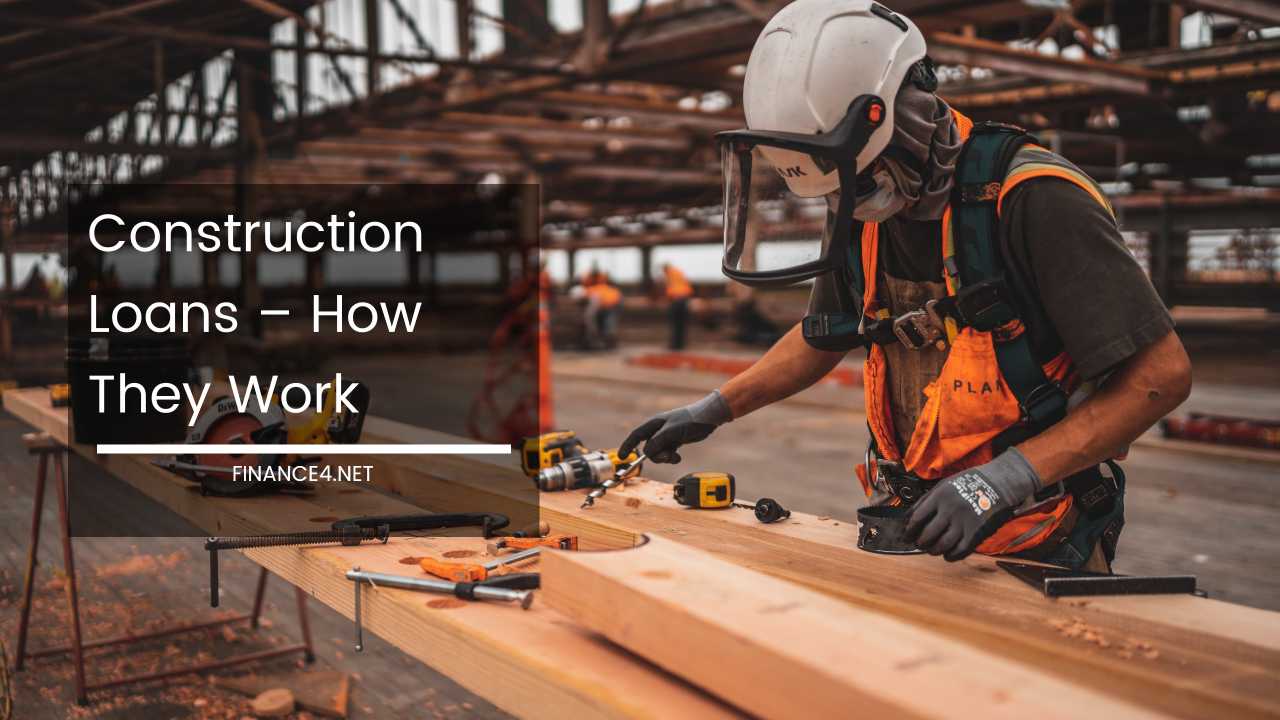Construction Loans: Financing Your Dream Building Project

Construction Loans – Demystifying Financing for Your Building Project
Construction loans are the cornerstones upon which countless building projects are built. From the individual crafting their dream home to the seasoned developer embarking on a commercial venture, these specialized loans provide the fuel to translate blueprints into reality.
This comprehensive guide delves into the intricate world of construction loans, exploring their different types, application processes, repayment structures, and considerations for a successful loan journey.
Unveiling the Need: A Spectrum of Borrowers
Construction loans cater to a wider audience than one might initially expect. Here’s a closer look at the primary beneficiaries of this financing tool:
- Home Builders: For individuals who yearn to construct their dream home from the ground up or completely renovate an existing property, construction loans offer the financial muscle to make their vision a reality.
- Real Estate Investors: Savvy investors leverage construction loans to finance the development of residential or commercial properties. These properties can then be sold for profit or generate income through rentals, creating a lucrative return on investment.
- Construction Businesses: Contractors and construction companies rely on construction loans to finance various projects, from the construction of office buildings and shopping centers to the development of sprawling residential communities. These loans allow them to take on new projects and fuel business growth.
A Tapestry of Options: Exploring Construction Loan Types
The world of construction loans isn’t a one-size-fits-all proposition. Depending on the project’s nature and purpose, borrowers can choose from a variety of loan structures:
-
Commercial Construction Loans: Designed for businesses involved in real estate development or construction projects, these loans offer a diverse toolkit for financing ventures:
- Bridge Loan: Acting as a temporary financial bridge, this short-term loan helps businesses gap the time between purchasing a property and securing permanent financing.
- Construction Interim Loan: This loan ensures a steady flow of funds throughout the construction process. Disbursement occurs in stages tied to achieving pre-defined milestones, such as foundation completion or framing completion.
- Real Estate Purchase Loan: This loan provides the initial funding to acquire land for development purposes, laying the groundwork for the upcoming project.
- Take-Out Loan: Upon project completion, this loan serves as the permanent financing solution, allowing borrowers to pay off the construction loan and secure long-term financing for the completed property.
- Mini-Perm Loan: This innovative loan combines construction financing and permanent financing into a single product, streamlining the financial process for qualified borrowers.
- Development Loan: Encompassing the entire development lifecycle, this loan provides comprehensive financing, from land acquisition and infrastructure development to construction itself.
- Joint Venture Loan: For projects undertaken by multiple entities, this loan structure facilitates collaboration by providing a single financing source for the venture.
-
Residential Construction Loans: Geared towards individuals building or renovating their homes, these loans come in two primary forms:
- Permanent Mortgage Construction Loan: Offering a seamless transition, this loan combines construction financing with a permanent mortgage. Once construction is complete, the loan automatically converts into a traditional long-term mortgage.
- Construction-Only Loan: This short-term loan focuses solely on financing the construction phase. Borrowers will need to secure separate permanent financing upon completion to cover the long-term costs of the property.
Navigating the Maze: The Mechanics of Construction Loans
The inner workings of construction loans differ slightly based on whether they are used for commercial or residential purposes:
-
Commercial Construction Loans:
- Businesses meticulously prepare a project plan outlining the budget, timeline, and contractor details.
- Lenders thoroughly assess the borrower’s financial health and track record in completing projects to gauge their ability to repay the loan.
- Funds are disbursed strategically, typically in stages tied to achieving specific construction milestones. This ensures that funds are used as intended and project progress is maintained.
- Interest is calculated only on the disbursed amount, not the entire loan amount, reducing upfront financial burdens.
- Repayment periods tend to be shorter, with strict schedules designed to incentivize timely project completion.
- In the event of default, lenders may resort to foreclosure, seizing the property to recover the outstanding loan balance.
-
Residential Construction Loans:
- Individuals approach lenders with detailed plans outlining the property and construction specifics.
- Loan approval hinges on the borrower’s creditworthiness and the ability to provide necessary documentation, such as property deeds and financial statements.
- A fixed interest rate is locked in for the duration of the loan, providing predictability in budgeting.
- Interest payments commence upon receiving loan disbursements, even though principal repayment might be deferred until after construction is complete.
- Borrowers may be eligible for tax deductions on the interest paid on the construction loan, offering some financial relief. However, it’s crucial to consult with a tax advisor to understand the specific eligibility and implications.
Challenges and Considerations: The Road Less Traveled
Construction loans come with their own set of challenges that borrowers should be aware of:
- Higher Default Rates: Due to the inherent volatility of construction costs and the possibility of unforeseen circumstances, construction loans carry a higher risk of default compared to traditional mortgages. Careful project planning, budgeting, and a buffer for unexpected expenses are crucial to mitigate this risk.
- Stringent Financial Assessment: Lenders meticulously evaluate a borrower’s financial stability to ensure they can handle loan repayments even during potential economic downturns or project delays. Having a healthy credit score, a strong debt-to-income ratio, and a history of responsible financial management will strengthen your loan application.
- Processing Fees: In addition to the loan amount itself, borrowers should be prepared to pay an upfront processing fee to cover the administrative costs associated with evaluating and finalizing the loan application.
The Loan Lifecycle: Timeline and Repayment Strategies
The duration of a construction loan varies depending on the project’s complexity and scope. They typically range from 1 to 20 years, with a direct correlation between loan term and interest rate. Longer loan terms offer more breathing room for repayment but come at the cost of higher overall interest payments. Here’s a breakdown of the repayment structure:
- Construction Phase: During this phase, interest payments are typically made only on the disbursed portion of the loan. This helps manage cash flow while construction progresses.
- Post-Construction Transition: Upon project completion, the loan may transition into a permanent financing option, depending on the loan type chosen. For permanent mortgage construction loans, the loan automatically converts into a traditional mortgage with principal and interest payments due monthly. Borrowers with construction-only loans will need to secure separate permanent financing at this stage.
Building a Strong Foundation: Securing Your Construction Loan
By taking proactive steps and crafting a compelling loan application, you can significantly increase your chances of securing the financing you need:
- Develop a Comprehensive Project Plan: A well-defined plan that outlines the project timeline, budget, and contractor quotes demonstrates your preparedness and reduces lender risk.
- Maintain a Stellar Credit Score: A strong credit score signifies your financial responsibility and increases your attractiveness as a borrower. Lenders typically have minimum credit score requirements for construction loans.
- Gather Necessary Documentation: Be prepared to present lenders with all the necessary documentation, such as property deeds, financial statements, permits, and contractor bids. This streamlines the application process and demonstrates your transparency.
- Choose the Right Lender: Research and compare different lenders specializing in construction loans. Consider factors like interest rates, loan terms, processing fees, and the lender’s reputation for customer service.
By demystifying the intricacies of construction loans and approaching the process strategically, you can transform your building project from a dream into a tangible reality.
With careful planning, a strong financial foundation, and the right lender by your side, you can navigate the construction loan landscape with confidence and turn your vision into a lasting legacy.



